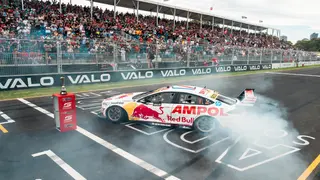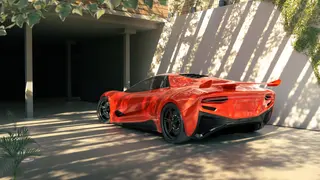Which is the fastest NASCAR car in the history of the sport?
Other Sports
Two car racing series dominate American motorsport; NASCAR and IndyCar. With decades in existence, both companies have gained significant popularity among fans. Dig in for an analysis of the IndyCar vs NASCAR debate, looking at the engine design, efficacy, track format, and fan culture, among other criteria.

What is the difference between Indy and NASCAR? Sports Brief has used publicly available data to analyse factors such as speed, skill requirements for drivers, car design, engine design, track design, race length, style, and schedule to determine the differences and similarities between the two car racing series.
One obvious difference between the two series is found in the cars’ outlook and design. The IndyCar Series is a class of motorsport that utilises an open-wheel design for its automobiles. For these vehicles, wheels are fitted outside the car's body. Formula One takes the top spot in this category of racing, IndyCar is considered the most popular open-wheel race in North America.
Which is the fastest NASCAR car in the history of the sport?
Other Sports
On the other hand, NASCAR's stock cars employ a closed-wheel structure. The closed-wheel stock cars have an enclosed cockpit that fits two participants, unlike open-wheel car racing cars.

Speaking to Car and Driver, IndyCar series driver Paul Tracy, who made a short-term transition to NASCAR, spoke on the differences between the two Series. He said,
"The biggest transition problem that a lot of drivers face when you come from an open-wheel car or an open-wheel style car. You are used to the car reacting to what you want, and when you make a change, the car responds to those changes. The NASCAR-type car is heavy and has such a small tyre that they just do not really react and drive."
As titans in American motorsports, IndyCar and NASCAR share several similarities. However, stark contrasts, such as the car's outlook and design, distinguish them almost completely. Here is a summary of the differences between the American motorsport giants
Finally! A list of the best female race car drivers of all time
MotoGP

To answer the question of which is faster, IndyCar or NASCAR, Sports Brief analysed results from Driver61's virtual test race, pitting NASCAR and IndyCar cars, among other automobiles such as Formula, Hypercars, GT, and superbikes. In the simulation, IndyCar recorded a top speed of 380 km/hr (236.1 mph), while NASCAR reached 300 km/hr (186.4 lbs) top speed.
According to AutoSport, IncyCar has the highest top speed ever documented, with an acceleration of 3 seconds in 0 to 100 km/h. On the other hand, NASCAR cars can reach top speeds of 321 km/h (199 mph) and an acceleration of 3.4 seconds in 0 to 96 km/h.

Automobiles competing in the IndyCar series are regarded as some of the lightest cars, a factor that allows the driver to achieve quick reactions from the car and reach fast speeds. Weight comparison between Dallara IR-12, Dallara IR-15, Tatuus USF-17, and Tatuus PM-18 showed that vehicles in the Series weighed between 500 kg (1102.3 lbs) to 739.3 kg (1629.8 lbs). At the start of the 2024 season, the series announced several weight revisions that would reduce the overall vehicular weight.
Ranking the 15 best car racing movies ever produced and their ratings
MotoGP
NASCAR sets and enforces strict weight requirements for its autos, drivers, and parts before and after each race. Its minimum car weight with the driver, fuel, and other equipment is 1496.8 kg (3,300 lbs). These requirements also dictate the weight distribution to enhance the NASCAR Series car's stability and performance on the track. Requirements for the 2024 season feature reduced fuel cans sizes.

Over the years, the NASCAR stock car has had a series of changes to engine specs in the hope of improving performance, ensuring safety, and reducing cost. According to the DailyDownForce, NASCAR engine horsepower has gradually reduced from 900 to 750 and 550 before increasing slightly to 670 ahead of the 2023 season.
In 2022, IndyCar Series engines from the American Honda Motor Company featured a 2.2-liter, V-6, twin-turbocharged engine that produced a maximum of 12,000 rpm and 550 to 700 braking horsepower, depending on turbo boost pressure. Ahead of the 2024 season, the Series introduced hybrid components to its engines, such as an electric motor and an energy storage mechanism.
A list of the best race-driving schools in the world at the moment
MotoGP

There are 30 tracks used in NASCAR's Cup Series, Xfinity Series, and Camping World Trucks. Out of these, the Talladega and Daytona oval tracks are considered superspeedways that are between 2.5 and 2.66 miles long and have tapered spacers. Other tracks in the series are shorter speedways or intermediate oval tracks below 2 miles or road courses as long as 4.048 miles. Like NASCAR, IndyCar tracks feature long oval superspeedways, short oval speedways, road courses, and street circuits.
Motorsports carries one of the highest percentages of fans around the world. Here are some statistics on the popularity of both NASCAR AND IndyCar by attendance and viewership across the United States of America.
Formula One carries the bulk of most fans around the world. According to Forbes, F1 recorded 1.21 million viewers per race across all ESPN media outlets and a staggering global audience of 1.55 billion fans in 2021.
The top 20 best American sports cars of all-time ranked
MotoGP

In 2023, the NTT IndyCar Series season was watched by 1.32 million viewers across NBC channels such as Peacock, NBC Sports, and USA Network. In the same year, the annual Running of the Indianapolis received a viewership of 4.93 million.
NASCAR boasts of a higher fan base in North America compared to IndyCar. Reports suggest that 2023 Cup Series viewership records stand at 2.47 million for 20 races in the series. The inaugural 12-turn and 2.2-mile street race in the series held in Chicago was watched by 4.79 million viewers across NBC channels
The 2023 IndyCar series had an audience of 330,000 fans. In July of 2023, the Hy-Vee IndyCar Race Weekend attracted crowds of 85,000 fans. NASCAR, however, has reported declining numbers. According to a report by Forbes, the circuit used to attract nearly 100,000 fans, but in 2023, 50,000 tickets were sold at the Pocono Raceway
How much does a NASCAR cost? All the facts and details of the Auto racer
Other Sports
In 2023, television ratings for the two series experienced a sharp decline.
As titans in motorsports, both series enjoy significant recognition from fans, drivers, manufacturers, and sponsors. However, technological advancements in the world of motorsports will keep the IndyCar vs NASCAR debate alive.
READ ALSO: Are F1 cars manual? A detailed insight into Formula 1 transmission technology
Sports Brief has published an article on Formula One transmission technology. The report seeks to answer one of the most common questions about Formula One: are Formula 1 cars manual or automatic? Click on the link above for details of the transmission technology used in the series and its impact on the automotive industry.